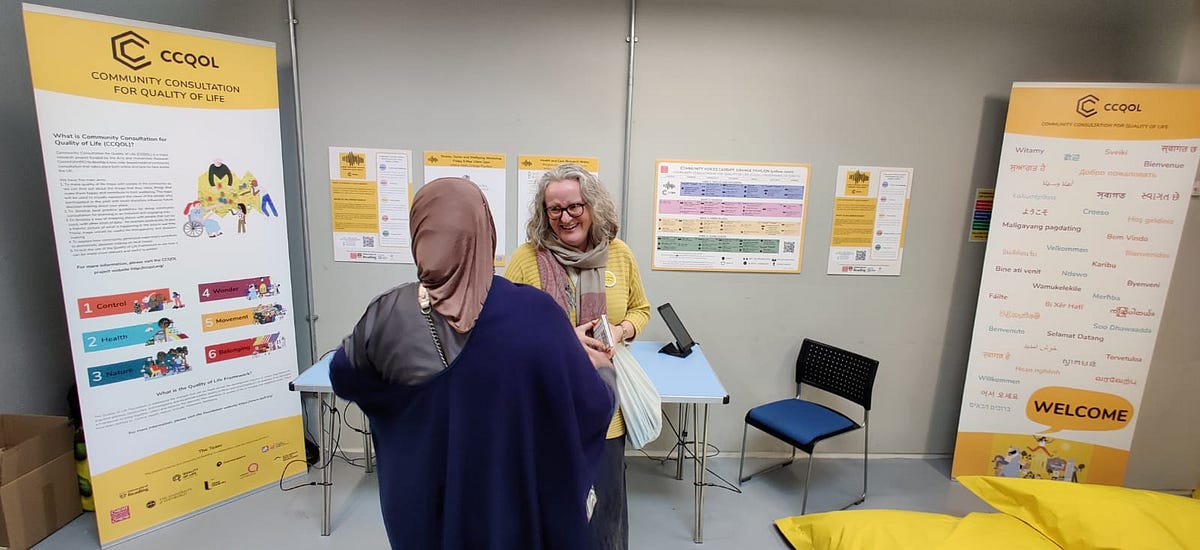In this toolkit you will find;
- Introduction
- The process
- The Toolkit
- Top 10 Recommendations
- Persona examples (general)
- Persona x Engagement Need Top 3 example
- Engagement Needs Overview example
- Key Information about Public Consultations when engaging Young People
- What is public consultation and why is it important?
- Why is public consultation important?
- Who can respond to a consultation?
- How can you get involved?
- School Resource - Downloadable Pack
- Do things differently
- Augmented Reality
- Tools
- Articles
- Inspiration behind the project
- Videos
- How kids can help design cities
- Citizen-Centred Design in Urban Planning
- Future Places Toolkit
Introduction
This toolkit includes 10 recommendations and a methodology for generating personas with examples for the initial project. Developing personas provides an understanding of the potential needs and motivations of young people, which can help those in charge of consultations get into the mindset of those they are seeking to engage.
Persona’s identify unique characteristics and potential needs that should be considered when deciding which of the recommendations to use.
It should be noted that ‘young people’ are not a homogenous group and should not be considered as such. Using the recommendations and personas together should provide better guidance for those leading consultations so they can engage young people and provide a positive experience.
We have also produced a pack for schools to educate their pupils on consultation and why they should get involved and we have made some suggestions for doing things differently, mainly focused on new and emerging technologies and information about the inspiration behind the project.
The process
The process below outlines how to use the EYPiC toolkit.
- Establish a target: Set yourself a target for engagement based on the population demographics for young people. Consider whether you are aiming for more responses or higher quality responses or both when setting your target.
- Enter the young person mindset: Determine the target audience for the project, and develop multiple personas similar to those shown below to help, to do this you can use census and other data to pull together likely personas for the area.
- Design engagement strategy: Use the toolkit's recommendations to design an inclusive and effective engagement strategy.
- Run the consultation: Implement your action plan based on the work developed in stage 1 and 2.
- Analyse the results: Evaluate the feedback received. Check whether you achieved your uptake in responses or quality as set out in step 1.
- Follow-up and review: AReview the impact of your new engagement process. Conduct follow-up consultations if necessary, and continuously refine the strategy based on lessons learned.
The Toolkit
Top 10 Recommendations

Persona examples (general)






Persona x Engagement Need Top 3 example
/w=3840,quality=90,fit=scale-down)
Engagement Needs Overview example

Key Information about Public Consultations when engaging Young People
What is public consultation and why is it important?
Public consultation is the process of gathering feedback, opinions, and suggestions from members of the public regarding a proposed policy, project, or decision. This process involves listening to and learning from local people before decisions are made or priorities are set.
The goal of public consultation is to engage the public in a meaningful and transparent way, to foster informed decision-making, and to build trust and accountability.
Why is public consultation important?
Public consultation is an essential part of the democratic process. It allows citizens to participate in decisions that affect their lives, and it enables decision-makers to make informed decisions that reflect the needs and concerns of the community.
Public consultation also promotes transparency and accountability. When decision-makers seek input from the public, they are more likely to be held accountable for their decisions. This can help to build trust and confidence in the decision-making process and can lead to better outcomes for everyone involved.
Who can respond to a consultation?
Anyone can respond to a planning consultation.
How can you get involved?
You can engage with the government directly, and take part locally, nationally or internationally in consultations. You can give your views on new or changing government policies by responding to consultations. Government departments take these responses into consideration before making decisions.
Here is a link to current, upcoming and past consultations: Get involved - GOV.UK (www.gov.uk)
Local authorities also publish links to consultations that you can get involved with on their websites.
School Resource - Downloadable Pack
There are many different types of public consultation, including:
- Public meetings: Public meetings are a traditional form of public consultation. They allow members of the public to hear about a proposed policy, project, or decision and to provide feedback.
- Surveys: Surveys are a popular way to gather input from the public. They can be distributed online or in person, and they can be designed to gather both qualitative and quantitative data.
- Focus groups: Focus groups are small, structured discussions that are designed to gather detailed feedback on a specific topic. They are typically moderated by a trained facilitator.
- Online forums: Online forums allow members of the public to provide feedback and engage in discussions about a proposed policy, project, or decision. They can be open to the public or restricted to a specific group of stakeholders.
- Public hearings: Public hearings are formal proceedings that are held by government bodies. They are designed to gather feedback and testimony from members of the public on a specific topic.
Do things differently
Below are a number of resources which could be considered when looking for alternative ways in which engaging with young people.
If you have any resources that you use and wish to share with others then please contact us.
Augmented Reality
Tools
Articles
Inspiration behind the project
In developing the brief for this research project we took inspiration from a number of different areas, these are mapped out in the mind map below.















